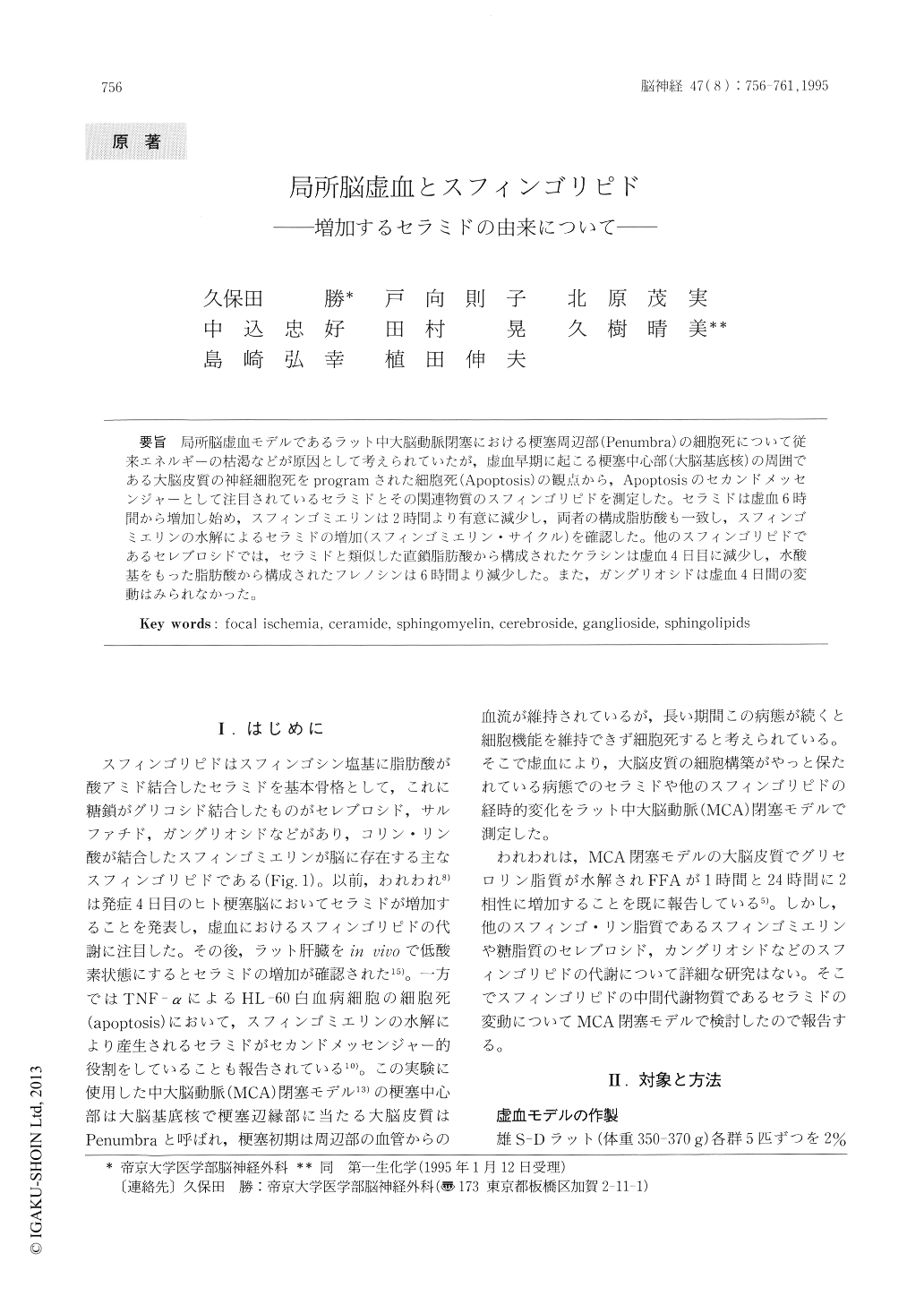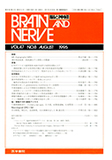Japanese
English
- 有料閲覧
- Abstract 文献概要
- 1ページ目 Look Inside
局所脳虚血モデルであるラット中大脳動脈閉塞における梗塞周辺部(Penumbra)の細胞死について従来エネルギーの枯渇などが原因として考えられていたが,虚血早期に起こる梗塞中心部(大脳基底核)の周囲である大脳皮質の神経細胞死をprogramされた細胞死(Apoptosis)の観点から,Apoptosisのセカンドメッセンジャーとして注目されているセラミドとその関連物質のスフィンゴリピドを測定した。セラミドは虚血6時間から増加し始め,スフィンゴミエリンは2時間より有意に減少し,両者の構成脂肪酸も一致し,スフィンゴミエリンの水解によるセラミドの増加(スフィンゴミエリン・サイクル)を確認した。他のスフィンゴリピドであるセレブロシドでは,セラミドと類似した直鎖脂肪酸から構成されたケラシンは虚血4日目に減少し,水酸基をもった脂肪酸から構成されたフレノシンは6時間より減少した。また,ガングリオシドは虚血4日間の変動はみられなかった。
Levels of ceramide, sphingomyelin, cerebroside and gangliosides were determined in rat cerebral cortex during focal ischemia produced by middle cerebral artery occlusion. Ceramide began to increase at 6 hours of ischemia and increased to 4.5 folds at 96 hours. Aminolinked fatty acids in in-creased ceramide were composed solely of non-hydroxy fatty acids, and stearic acid was the most prominent. Sphingomyelin, whose aminolinked fatty acids were mostly stearic acid, decreased in a time-dependent manner and became about a half of controls at 96 hours.

Copyright © 1995, Igaku-Shoin Ltd. All rights reserved.


